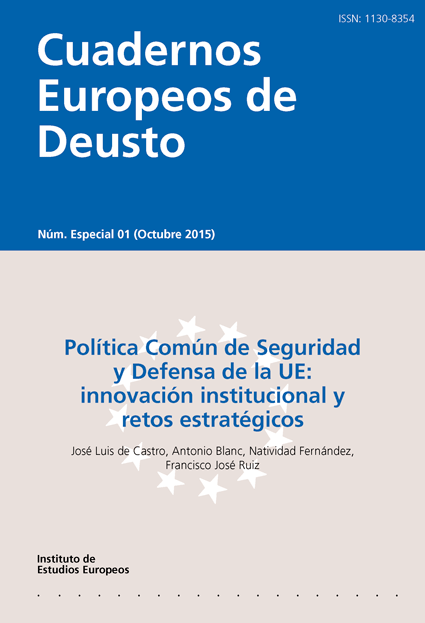The recent changes in the strategic environment of the European Union: A case study of Russia
Abstract
The new threats that the European Union is facing are located mainly in its two strategic environments. Firstly, the southern edge characterised by an unstable Mediterranean where there are non-resolved conflicts as well as other scenarios of increasing instability such as the Sahel and the Middle East. Secondly, the eastern edge where Russia has annexed Crimea and supports the separatists of Donbass pointing to a risky scenario for the stability of the EU. Due to that fact, the Union has redefined its relationships with the eastern neighbours adopting a position that combines an assertive approach with an attempt of not breaking the channels of communication with Russia.
Received: 31 March 2015
Accepted: 30 May 2015
Published online: 15 April 2016
Downloads
The author grants to the Publisher the distribution, public communication, and reproduction rights of her/his work subject of publication in Deusto Journal of European Studies (DJES), whichever the media may be, including the permission to include it in the databases where this Journal is indexed and in the institutional repository of the Universidad de Deusto.
Upon its publication, the content of any Issue of Deusto Journal of European Studies (DJES) can be accessed, read, downloaded, copies, and distributed freely for non-commercial purposes and in accordance with any applicable copyright legislation.
The content of Deusto Journal of European Studies (DJES) can be subsequently published in other media or journals, as long as the author clearly indicates in the first footnote that the work was published in Deusto Journal of European Studies (DJES) for the first time, indicating the Issue number, year, pages, and DOI (if applicable). Any other use of its content in any medium or format, now known or developed in the future, requires prior written permission of the copyright holder.
The content of the work published in Deusto Journal of European Studies (DJES) is each author's sole responsibility. The authors assume the responsibility of obtaining all the necessary licenses for the reproduction in their manuscripts of any text, material or illustration coming from another author, institution or publication. The liabilities that may arise from complaints for publishing plagiarised articles are the sole responsibility of the author.


3.jpg)
2.jpg)
2.jpg)
2.jpg)
2.jpg)
2.jpg)







